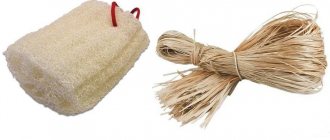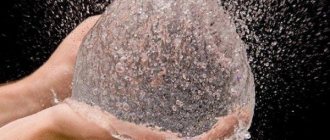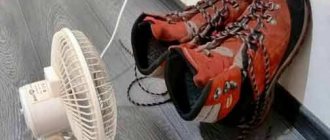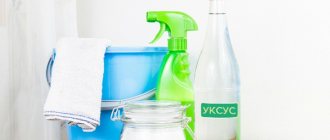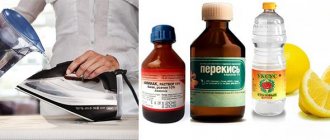Why clean your water cooler?
It is necessary to clean the cooler because during long-term use, plaque forms in any container, which contains harmful microorganisms. They, in turn, can damage the device and cause harm to health.
If the device also has a water heating function, scale will form in it. All these factors change the smell and taste of water.
If you do not clean the cooler in a timely manner, this can lead to:
- Poor water supply through the tap;
- Overheating and improper functioning of the device (water heating does not stop);
- The device fails.
If you notice that your device has one of these problems, it is necessary to urgently clean it.
Where does danger lie?
And almost everywhere. In every shopping center there are coolers for customers, in hotels, travel agencies and hospitals (where you can catch something even without a cooler). What about hotels? In many Kemerovo schools and kindergartens they don’t monitor the cleanliness of coolers. When you're at a parent meeting, pay attention to the back wall of the cooler. Is there a mark about timely cleaning? Now think again about the bacteria and parasites that we have listed. And this is the water your children drink!
“There are schools and kindergartens that change the filters in drinking fountains and clean the cooler from which children drink only when they are warned about checking. Can you imagine? And the rest of the time our children drink dirty water, in which a huge number of bacteria already live! How can this even be allowed?” our expert wonders.
see also
Even if in organizations where there are many visitors there is a bottle with a simple mechanical pump, this does not mean that everything is in order with it. In the same way, harmful bacteria can develop and live in the pump. And if it is not cleaned, then this is a direct insult to customers - the price of disinfection is only 150 rubles.
According to our expert, the cleanliness of coolers today depends only on the decency and accuracy of a particular company/institution manager. But this procedure should be an unbreakable rule - once every six months strictly according to schedule. To be fair, it is worth noting that not everyone deliberately violates the rules for caring for a cooler. Some people simply don’t know that it requires cleaning. Ignorance is unforgivable in the 21st century.
“This problem cannot be treated negligently; people’s health depends on drinking water. Saying: “I have a clean cooler,” “I don’t feel anything, I’m fine,” or even better, “if it breaks, I’ll buy a new cooler,” is not an option. Don’t buy it, because the price of coolers has skyrocketed; if previously you could get a pretty good piece of equipment for five thousand, now the price is twice as high,” explained the manager of A Cooler.
Cleaning the cooler at home
There are several options for cleaning a cooler that is used at home or in the office. There are risks of the device malfunctioning after cleaning, so you need to know a few nuances.
When cleaning you should not use:
- Abrasives;
- Organic solvents;
- Use a dishwasher to clean the cooler parts;
- Steam cleaners;
- Use solvents and powder;
- Devices operating under high pressure.
Sedum must be carried out in a device disconnected from the power supply. After which the bottle is removed, the remaining water is drained using taps. It is necessary to drain the water starting from the hot water supply tap, and then the cold one. Alternating drainage of water through hot and cold water supply. To ensure that no more water remains, tilt the cooler in different directions.
On the back of the device there is an additional tap that must be turned and completely drain the water from the system.
What is prohibited to use?
Some items and substances are prohibited for use in cleaning.
All of them lead to damage to the cooler:
- dishwasher (for washing small parts);
- metal sponges and brushes;
- any abrasive powders;
- cleaning products with caustic composition (concentrated acid, alkali);
- chemicals that should not come into contact with food: solvents, gasoline, acetone.
External cleaning
After the device has been completely cleaned of water, you can begin cleaning the outside of the device from dirt. To clean the external parts of the cooler, you can use it like regular dish detergent or cooler cleaner.
To clean the cooler you will need:
- Waterproof mat;
- Containers for collecting water;
- A cloth or soft sponge for washing;
- To clean taps and pipes you will need brushes; they can be seen by wrapping a bandage or cotton wool around a wire;
- A dry, lint-free cloth;
- Rubber gloves to protect hands.
The first step in cleaning the cooler is cleaning the taps. They are removed from the device and thoroughly washed from the outside and inside using a brush.
The second step is the removal and disinfection of the liquid collection container (drip tray); the largest amount of microelements is distributed in it. Next, the installation site of the water bottle and the body as a whole are disinfected.
It is also necessary to remove the bottle receiver, after which you can get to the divider, which must first be washed with detergent and then rinsed with clean water.
After everything has been done, the coolers have been cleaned, they must be installed in the order in which they were removed. The device must be wiped with a dry cloth so that there are no streaks left.
You can clean the cooler tubes using a 2% soda solution; they are placed in the solution for 20 minutes, then washed with clean water.
To clean the internal surfaces of the cooler, special solutions are used to remove plaque and microorganisms.
Recommendations for cleansing and some contraindications
Professionals advise sanitizing the cooler once after thirty days of operation, despite the fact that the manufacturer’s recommendations indicate a completely different period (six months). However, we all wash dishes after each use, so why does such an important device for maintaining clean water need to be washed after such a long period of time? It is enough to disassemble the device to see for yourself that sanitary work has been needed for a long time. You will be able to find not only scale, but also green vegetation on the internal nodes. Regular flushing will significantly increase the purity of the fluid and increase the operating time of the equipment.
Before you learn how to clean a water cooler, you should learn some of the nuances of the work that will allow you to avoid the most common mistakes. There is no need to wash machine parts under running tap water, as such actions will not bring the desired result, because it is best not to think about the quality and purity of such a liquid. Steam cleaning devices and dishwashers are also not suitable for solving this problem.
Cleaning solution with citric acid
The most common cleaning agent for coolers has become citric acid. It effectively removes plaque from the walls of both bottles and the cooler itself. It is not only effective, but also does not harm the device and removes unpleasant odors well.
- Clean with citric acid, dilute 200g of citric acid per 10l.
- After that, lemon water is poured into the cooler and connected to the mains and the water is heated.
- After heating, the device is disconnected from the network and left for 5-6 hours.
- The water is then drained and the apparatus is washed with clean water.
- If necessary, repeat the procedure.
Cleaning with a polymer antiseptic
You can clean the device not only with the help of improvised means, but also with special solutions. On sale you can find the product guanopolysept, which contains a small content of chlorine and aldehydes; they are not harmful to health.
- The solution is mixed with water according to the instructions, the cooler is filled with it and plugged in.
- Water is poured through taps into the tank following a certain period.
- Filled with water and periodically with water transfusion, the device should stand for 24 hours.
- The cleaning time can be extended if necessary.
After cleaning, the liquid is drained and washed with clean water.
How to prevent mold?
First of all, you should give up questionable drinking products. It is better to buy water from trusted suppliers than to save on your own health. In addition, you can order an ozonizer for the cooler, which will be able to promptly remove mold, technical plastic taste and unpleasant odor, as well as destroy the favorable environment for the growth of bacteria. Of course, cleaning the cooler yourself has its drawbacks, so we recommend using the services of professionals who know how to remove mold and make the water safe to drink.
Preventive procedures
In order for the water in the cooler to be fresh for a long time and free from foreign odors and tastes, the following actions must be performed:
- Before installing a new bottle, wipe the surface with a clean damp cloth to remove dust and other debris;
- Once a week it is necessary to wipe the taps and clean them periodically by wiping and pouring water from the drip tray;
- Keeping your hands clean is just as important; before installing a new bottle, wash your hands thoroughly with soap and water;
- Before installation, it is necessary to remove the label, since after installation it may fall into the cold water container;
- Only purified water should be placed in the cooler, since the system is not equipped with additional filters. Tap water contains microorganisms that can cause scale formation.
To maintain normal functioning, it is necessary to clean the cooler at least once every 3 months. Keeping the device clean will extend its service life.
Preventive actions
To minimize the possibility of contamination and maintain the freshness of the water in the dispenser, the following recommendations should be followed:
- every time you change a bottle, treat the bottle receiver and neck with a disinfectant wipe;
- once a week, remove and process the taps, clean the pan;
- before installing the bottle, treat its surface and wash your hands;
- Carefully remove the protective label from the neck. Remains of this film may end up in a glass of drinking water;
- Do not use the cooler with a bottle of tap water. The device does not have a filter, and untreated water activates the development of pathogenic microorganisms;
- Wipe the outside of the housing with a damp cloth if there is visible dirt.
Cleaning the water cooler is a mandatory procedure that should not be neglected.
In the absence of proper care, pathogenic microorganisms begin to actively develop inside the device, the taste and smell of water change, and the device itself gradually loses its functionality.





